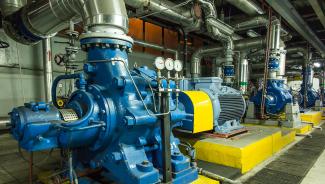An international water and wastewater systems expert from the USA shares his guidelines to designing successful pumping systems.
The design of a pump system is critical to the outcome of infrastructure projects across a wide range of industries.
International water and wastewater systems expert, Andrew Perez says designing successful pump systems relies on a few simple but essential factors.
“Designers need to get this stage right, as those lines on a drawing are destined to become a tangible asset”, Mr Perez said.
Successful design begins with correctly defining the goal and the problems the pumping system will remedy.
“It is often the role of the designer to identify these aspects and develop engineered solutions to meet them”, he said.
“Designers should also take care to not mistake symptoms for problems.
“If the initial analysis is wrong, any design activity could be in vain and a wonderfully engineered pump system could be installed to meet the wrong needs.”
It is also important to stay up-to-date with the various types of pumps available and their applications.
The most common problem Mr Perez has encountered is the incorrect application of equipment.
“The selection of an incorrect pump can lead to increased operating costs, increased downtime, costly piping and electrical upgrades or even an expensive pump replacement.”
Mr Perez advises designers to go back to basics and revisit pumping system design theory.
“Theory is typically first learned in university, applied in practice problems and infrequently revisited thereafter.
“Refreshing and updating knowledge on the theories, equations and selection techniques will help sharpen the designer’s ability to create robust systems that serve all needs”, Mr Perez said.
This method recently helped Mr Perez’s team with the retrofit of a wet-well dry-well pump station.
“We were able to evaluate the use of a submersible pump vs dry pit pump, correctly size the force main and wet well, determining that dry pit pump was the best solution.
“Similarly, at another pump station, a quick calculation could have prevented an oversized sewage pump station that resulted in tremendous odour issues in an adjacent neighbourhood!”
Lastly, designers must take into account the needs of operators and maintenance staff.
“In order to appropriately design the pumping system, the designer needs to understand both its functional needs and the needs of those who will work with it”, Mr Perez said.
“The best designers learn lessons from the operators and maintenance staff.
“Listen to those folks and apply their advice if you want your designs to provide the most robust service.”
Mr Perez is currently the Engineering Supervisor for the wastewater treatment facility in Pierce County Sewer Division, Washington, USA. He has over 19 years’ experience in water and wastewater systems, managing a range of multi-million-dollar projects across the public and private sectors. He will be in Australia to facilitate the American Society of Civil Engineers' training course, Pumping Systems Design for Engineers, delivered with Engineering Education Australia.
